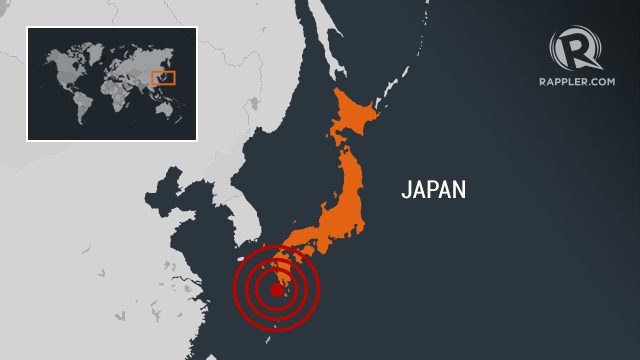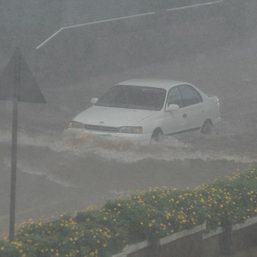SUMMARY
This is AI generated summarization, which may have errors. For context, always refer to the full article.

TOKYO, Japan (UPDATED) – A powerful 7.0-magnitude earthquake struck off the southwestern coast of Japan early Saturday, November 14 authorities said, with a small tsunami observed on one island but no major damage reported.
The US Geological Survey (USGS) put the epicenter of the shallow quake about 160 kilometers (100 miles) from the town of Makurazaki in southwestern Japan.
It was centered about 10 kilometers under the ocean floor and struck at 5:51 am (2051 GMT Friday), the USGS and Japan’s Meteorological Agency said.
The Meteorological Agency issued a tsunami advisory as a result of the quake but cancelled it about 90 minutes later.
A tsunami measuring 30 centimeters (about one foot) in height was observed on the southern island of Nakanoshima, it said.
No major damage from the quake or tsunami was reported, while a pair of nuclear reactors on the southern island of Kyushu were unaffected, its operator said.
“We have not received any reports of injuries or damage following the earthquake and tsunami advisory,” Tetsuro Shinchi, an official with the Kagoshima prefectural government on Japan’s main island of Honshu, told Agence France-Presse.
Still, he said residents were being urged to exhibit caution.
“I felt a fairly strong jolt, but I have not seen anything unusual,” he said.
A nuclear power facility on Kyushu was operating normally, an official said.
“There was no abnormality at the number one and the number two reactors following the quake,” said Naoyuki Igawa, a spokesman with operator Kyushu Electric.
“We are still checking but we have not seen any damage to the facility.”
Japan is situated at the juncture of several tectonic plates and experiences a number of relatively violent quakes every year.
But building codes are rigorous and regular disaster drills are held, helping to ensure that despite their frequency and magnitude, quakes usually pass without loss of life or significant damage to property in Japan.
A massive undersea quake that hit in March 2011 sent a tsunami barreling into Japan’s northeast coast.
As well as killing thousands of people and destroying communities, the waves also swamped the cooling systems at the Fukushima nuclear plant, sending three reactors into meltdown.
The nuclear disaster, the world’s worst since Chernobyl, displaced tens of thousands of people and rendered tracts of land uninhabitable, possibly for decades. – Rappler.com
Add a comment
How does this make you feel?




There are no comments yet. Add your comment to start the conversation.